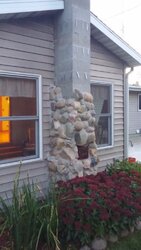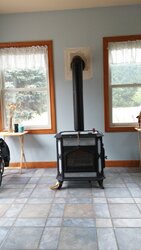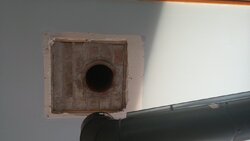Hi,
This is my first post on this forum and I am a newbie to wood burning. I bought my current house 2 years ago and the people we bought the house from had a pellet stove which they took with them.
This year I purchased a woodstock fireview. I connected the stove with single wall pipe. There is a clay flue that goes through the wall and up the chinmey. I've cleaned the flue out really well and have alrealy lit 5 fires.
My question is: Is the clay flue safe to burn in or should I be looking for some type of liner? The flue is in great shape I've look down the chinmey and cannot see any cracks or gaps in the flue.
Thanks for your help!
This is my first post on this forum and I am a newbie to wood burning. I bought my current house 2 years ago and the people we bought the house from had a pellet stove which they took with them.
This year I purchased a woodstock fireview. I connected the stove with single wall pipe. There is a clay flue that goes through the wall and up the chinmey. I've cleaned the flue out really well and have alrealy lit 5 fires.
My question is: Is the clay flue safe to burn in or should I be looking for some type of liner? The flue is in great shape I've look down the chinmey and cannot see any cracks or gaps in the flue.
Thanks for your help!




